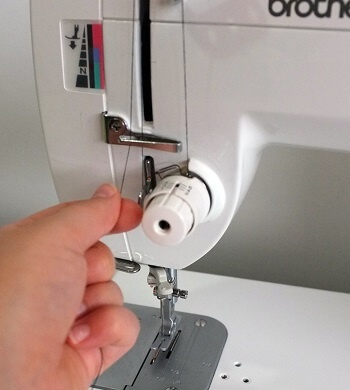
What else do you know about the sewing machine except that it makes deafening noises in its way to the service? Without us realizing it, this humble apparatus works extensively to fulfill the thumping need of clothing!
Want to know how does it amazingly get its job done?
Continue reading to get familiar with the nitty-gritty and the intricate engineering behind this nifty tool.
History of Sewing Machine
John Fisher introduced the first model of the modern sewing machine. Before him, there were many other earnest inventors and developers who worked to incorporate advantageous features to its design only to make the art of sewing plain-sailing.
The prototype was made by Charles Frederick Wiesenthal, a German engineer in 1755. Then, Thomas Saint developed the first actual design of a sewing machine. Commentators say his design was too advanced for the contemporary period. Later in 1874, William Newton Wilson, who was a sewing machine manufacturer, implemented Saint’s design as a functioning tool.
After that, some Englishmen and an Australian tailor improved the machine further. Finally, in 1829 Barthélemy Thimonnier, a French tailor, developed another practical model using Saint’s model idea as the base. Next year in July 1830, his working model of sewing machine successfully got commercialized.
Inventors kept on modifying the design with new features to make it adept till 1851.
Components of Sewing Machine
Keeping the extensive operation aside, you should take a look at the following essential parts it bears to comprehend the system of this incredible machine wholly –
Spool, Bobbin Case, Bobbin Winder Tension Disc, Bobbin Winder, Buttonhole foot, Feed dogs, Hand Wheel, Foot Paddle, Needle, Noodle Clamp, Needle Plate, Presser Foot, Presser Foot Lever, Pressure Regulator, Slide Plate, Spool Holder, Thread Take-up Lever, Tension Disc, Thread Cutter and, Thread Guides are the essential parts.
I presume you can now partially fathom the reason for such a machine to make its iconic reverberating rattles.
Working Mechanism of Sewing Machine
You could be thinking an electronic and a hand-powered sewing machine differ in the mechanism. Interestingly, their fundamental working principles are the same.
But, the way a sewing machine stitches is different from the way we try to sew by hand. For starters, it’s operated with two thread sources, which is completely opposite of the way we do it with a single thread.
We keep on stitching by pushing the needle forward through a fabric. Unlike us, a needle in a sewing machine penetrates through a thread in a fabric by upward and downward motion.
However, the modern design of the machine is comprised of three key mechanisms to carry out equal-sized stitches-
- Needle mechanism
This renders one source of thread. There’s a horizontal shaft inside the machine carrying two discs on both edges. In one of the discs, there is another vertical shaft or crankshaft. The crank holds and directs the needle.
When the horizontal shaft moves the wheel with a crankshaft, it causes the needle to rise and fall. The round-and-round motion of wheels on the shaft transforms into the needle’s up-and-down motion with the help of the crank.
- Bobbin and shuttle mechanism
This yields the second source of thread. The bobbin stays inside a rotating shuttle case, which has a hook attached to its body. The shuttle needs to run a little quicker than the way the needle moves. When the shuttle rotates, the hook attached to it reaches the needle to combine threads.
- Fabric’s motion and stitching mechanism
With the help of metal ridges, the fabric moves under the needle with stitches. The presser foot and feed dogs tug the fabric towards you and place it between two stitches.
The fabric moves as much as you put pressure on the foot paddle. This part will be clearer when you will go through the next section about how the stitching comes about.
How Do the Stitches Occur?
Depending on the principle of the stitching mechanism, you already know we need two threads to stitch a piece of fabric with a sewing machine.
Keeping that in mind, one thread comes from a spool that travels through the eye of the needle, and we warp the second thread onto the bobbin inside the shuttle under the throat plate. Let’s walk you through the stitching steps-
First step
When you run the hand-wheel of a sewing machine, the needle along a thread on its tip pierces through the fabric lying on the throat plate.
Second step
Meanwhile, the shuttle rotates. When the needle with the thread goes under the throat plate, the hook of the shuttle reaches the needle by then. So it can catch the threads both from the tip of the needle and the bobbin inside it.
Third step
Immediately, after the hook takes the threads with it the needle keeps on rising from the throat plate to go inside again with the thread.
Fourth step
In the meantime, the shuttle continues to rotate by carrying the threads in its notch in accord with the needle to make a knot. And that results in loops, finally, in stitches.
With the synchronization of three of these mechanisms, a sewing machine successfully makes perfect stitches in a chain reaction. You can control the speed of sewing with the cooperation of the foot paddle.
How Many Stitches at a Time?
A sewing machine can produce more the 1000 stitches a minute. In addition, a low-end model can make 10 stitches per second, and the high-end model can make twice as much as a low-end model.
Conclusion
Sewing machines are truly an excellent invention. The advent of this tool propelled the textile industries to their journey of making clothing. Most importantly, think about how difficult it would have been to stitch a favorite dress of yours if we didn’t have this amazing apparatus.
If you have got one of these appliances at your home, you certainly know how much it assists you to fix a dress or even make one with the machine.